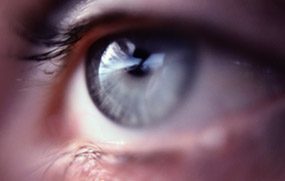What is it? How to treat it and what can be done at Visique Wight Optometrists?
What causes Dry Eye Syndrome?
- Common condition
- Caused/ exacerbated by a number of different medical and environmental conditions
- Contributing factors include, inflammation of the eyelid glands (meibomian glands) which can compromise the quality of the tear film which causes tears to evaporate more quickly resulting in irritation
- Tear production decreases with age, therefore those over the age of 65 are more likely to display the symptoms of Dry Eye Syndrome.
- Women also have a greater likelihood than men of developing dry eye due to hormonal changes
- Some medications can increase dry eye symptoms. These include decongestants, antihistamines, blood pressure medications, oral contraceptives, antidepressants
- Sjögren’s Syndrome is a disorder in which immune cells attack and destroy the glands that produce tears and saliva to cause dry eyes and dry mouth. Although associated with rheumatic arthritis, Sjögren’s Syndrome can occur throughout all age groups.
- Other diseases that may be associated with dry eyes include diabetes, asthm a, thyroid disease, and lupus.
- Dry eye is the leading cause of contact lens discomfort or intolerance. It more commonly affects soft contact lens wearers.
- Dusty and smoky environments also exacerbate dry eye irritation.
- Eye strain, fatigue and the tendency to blink less frequently while at the computer can lead to dry eyes. Computer users tend to blink much less frequently (about seven times per minute versus a normal rate of around 22 per minute). This leads to increased evaporation along with the fatigue and eye strain. Trying to be more conscious of blink rate, air circulation and glare can also help to reduce dry eye symptoms.
How can it be diagnosed?
- Specific identification of the factors contributing to Dry Eye Syndrome is the most important step towards treatment.
- A simple optometric examination to evaluate both the quality and quantity of your tears and provide you with a personalized treatment programme.
How can it be treated?
- Replacing tears – there are several different types of artificial tears that give relief and can be purchased without a prescription.
- Conserving tears: If dry eye symptoms persist, another solution may be the reducing tear drainage. This is a temporary or permanent closure of a tear drainage channel, also referred to as punctal occlusion.


